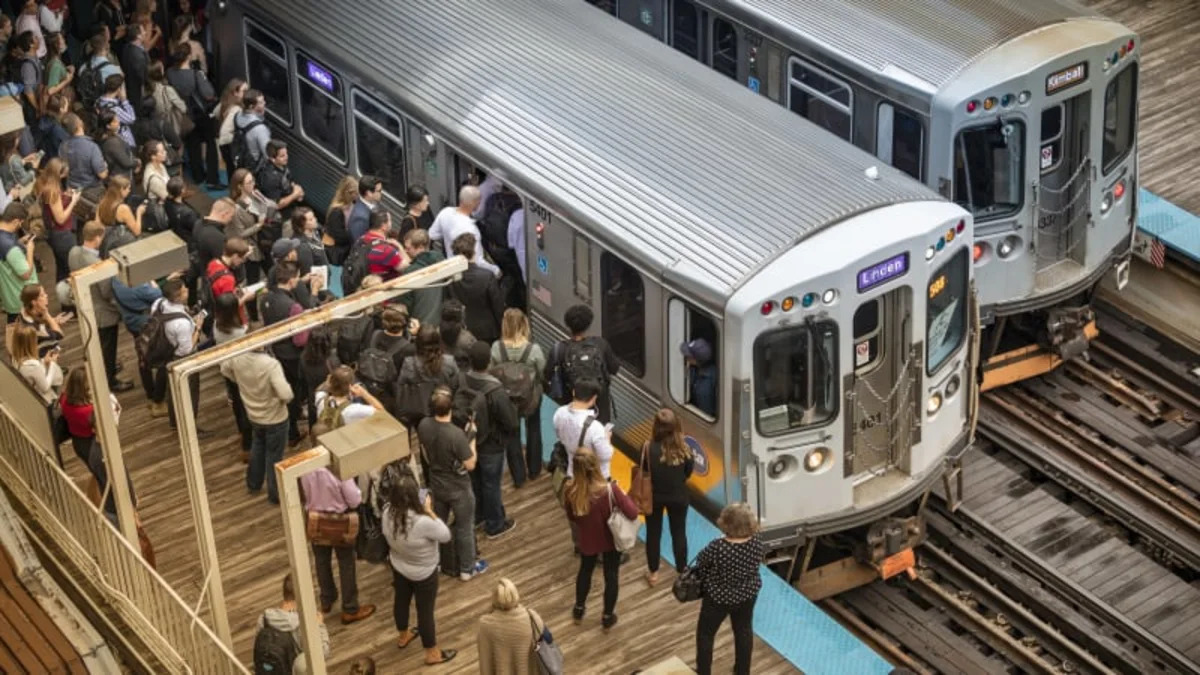According to the National Association of City Transportation Officials (NACTO, with membership of 25 big U.S. cities and 41 affiliate cities), “During the early twentieth century, cities embarked on large-scale modernization projects to accommodate cars, reshaping their streets and public spaces. The landscape created by car dependence led to increased racial and economic segregation, abysmally high traffic fatalities, increasingly long commutes, and rising global temperatures and emissions.”
So now, on the supposed precipice of autonomous vehicles, NATCO wants to get ahead of the curve, so it has released its “Blueprint for Autonomous Urbanism, Second Edition.” It wants to take steps to mitigate any future misfortunes, as it believes occurred in the automotive era.
The NACTO report sees a bleak future: “If AV technologies focus on private cars and single occupancy vehicles, they will increase congestion and traffic fatalities, exacerbate economic and racial inequalities, and leave us even less equipped to mitigate the impacts of climate change. To avert this dystopian outcome, cities must prioritize the modes that move people efficiently. ...”
And those modes are non-automotive: “People walking, biking, rolling and resting get first priority for street space and resource investments.”
To be fair, those transportation officials have their hands full, as over 80% of the U.S. population resides in cities. And getting from point A to point B within those municipalities isn’t getting any more efficient. They cite stats such as the fact that in 2017, drivers in the U.S. spent 97 hours, on average, sitting in traffic. What’s more, the number of vehicle miles traveled (VMT) that year increased to a record 3.2 trillion miles.
One calculation in the NACTO report was to determine what is required in terms of space to move 10,000 people in a city within an hour. For typical vehicles on a “conventional arterial,” 13 lanes are required to move 800 vehicles per lane each hour to get to 10,000.
And though an increasing number of companies are developing air taxis, the amount of space required for those is also substantial: The report cites data from Uber that says skyports could accommodate 1,000 landings per hour on a footprint of 1 to 2 acres, so NACTO extrapolates that if there are four passengers per vehicle, to achieve the 10,000 passengers per hour 2.5 to 5 acres of space are required.
It's not like San Francisco has room for 13 lanes. And try to find 2.5 acres of open space in New York City. So it's easy to understand why NACTO prefers three other transportation modes:
If there were two bus-only lanes measuring just 23 feet wide, 80 buses per hour could move the 10,000. And that volume could be handled by a sidewalk or a protected bike lane measuring just 12 to 15 feet wide.
Looked at from the perspective of real estate use, that makes sense.
But while walking and biking are two preferred modes, there is a recognition that most people need to travel some distance in a city for work, recreation, etc. According to NACTO, “In urban areas, fixed-route transit in designated rights-of-way is the most efficient way to move people in large numbers.” Which goes to the point of the importance of the city bus. Why? “The bus’s advantage comes from having riders come to it, rather than the other way around.” That Lyft or Uber may come to you, but that’s not going to make it easy going in the urban setting.
The report recommends a variety of economic sticks to make driving cars less desirable. For example, it points out that a study has found the $3 ride-hailing fee adopted in New York will cut ride volume and miles by a mere 3% to 4%, so to achieve a “meaningful reduction” it is necessary to go to $10 or more.
And congestion charges would make it more expensive to drive in designated areas.
Even “pricing the curb” can be employed, which charges a dynamic fee based on the use of a curb for parking and loading, and the amount of time it's used.
The report recommends physical changes, too. While you might imagine that streets are designed for the use of those who are at least 16 years old and have a valid driver’s license, the report says, “Cities should design streets to meet the safety and mobility needs of a small child.”
This means that vehicles in urban settings must have a restricted speed — restricted to not more than 25 mph. To help ensure that, NACTO is recommending that lanes be 10 feet or less in width (“Narrow lanes reduce speeds”) and that there be tight corner radii at intersections. (A typical lane currently can be up to 15 feet wide.)
To be sure, they’re not calling for just sidewalks, bike lanes, bus lanes, and meadows throughout the urban environment. They’re also taking the needs of freight hauling into account by recommending consolidation of deliveries to reduce the number of trucks, wheeling goods on foot, etc. Not sure how they expect delivery trucks to navigate 10-foot-wide lanes with tight turns, however.
But the transportation future described in this blueprint is one that is vastly different than the one we're used to: “In the autonomous age, streets must give ultimate priority to pedestrians, bicyclists and transit riders.”
You’ll note there is no mention of “drivers.”
One more thing, which would be possible through geofencing and has already been discussed by some automakers: “Vehicles should be optimized to travel at consistently low speeds.”


Sign in to post
Please sign in to leave a comment.
Continue